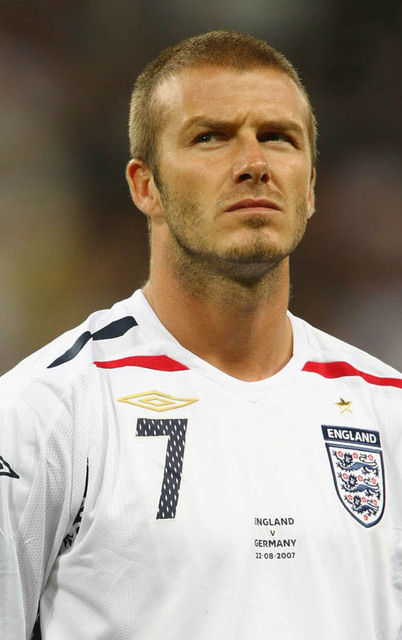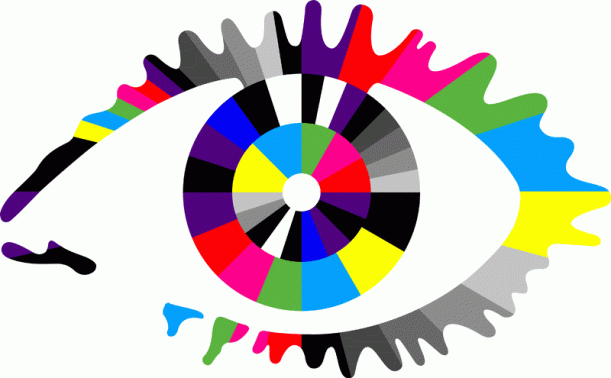With high-profile celebrity status, endorsements, sponsorship and advertising deals generally follow. However sometimes the celebrity face becomes st ronger than the brand itself. If a brand is to select a celebrity to front their brand then they need to be 100% certain it they will resonate with the target audience and act as a suitable ambassador.
ronger than the brand itself. If a brand is to select a celebrity to front their brand then they need to be 100% certain it they will resonate with the target audience and act as a suitable ambassador.
Sadly with some celebrities comes a fair share of controversy. The likes of Tiger Woods and John Terry have brought shame upon themselves recently and haven’t reflected well on their brands. The likes of Kerry Katona and David Beckham have also caused their brand associations to become strained over the years. Some of these celebrities have done minor things which in the grand scheme of things aren’t huge, some of created furore bordering on national disgraces.
So why do brands continue to use celebrities? What are the risks? What are the benefits? And are there alternatives?
Why use celebrities?
Brands that produce or sell luxury goods often use celebrities. They choose celebrities that they perceive share the same values as their products. Celebrities that offer the glamour, to portray their products as aspirational to the general public. The perfume and cosmetic industries generally use glamorous or beautiful people to show how effective their products are. These celebrities have generally been huge cel ebs from supermodels to hollywood stars.
ebs from supermodels to hollywood stars.
Another key trick is to pick up on somebody that’s popular or hot at the moment. Whilst I mentioned in the above post of perfume and cosmetics companies picking über glamour, brands like L’Oreal are experts at hand-picking people “of the moment”, classic examples include Cheryl Cole and at one point footballer David Ginola. Garnier also pulled off the coup of grabbing a popular celebrity by enrolling Davina McCall. There are other cases when companies get it wrong, remember Jason McAteer advertising shampoo? More bad decisions later in this post.
The potential
Get the celebrity right and your brand could be off to a flyer. The endorsement is believable and customers want to be associated with the brand as much as the celebrity. Get it wrong and the endorsement looks at best paid for and at worse ridiculous. Of course it isn’t always down to the celebrity, sometimes it is as much the cheesy production of an ad that breaks down the credibility – Jamie Redknapp and Louise Redknapp holiday commercial anybody? It can also be the innocent and bizzarrely naive actions that undermine the endorsement (David Beckham shaven his head whilst advertising Brylcreem). Whatever the case brands need to have a plan in place to mitigate poor choices by either their agency or celebrity figurehead.
The potential is also great. If you can get an up and coming act at the start of their rise you could benefit in two ways. Ride the crest of their rise to fame and receive some quedos in terms of helping them achieve their goals. If the tie-up works as it should in your strategy meetings then there is no reason why you can’t succeed. Nike seem great at this. They consistently select sports stars that embody sporting excellence and in the main shy away from bad news stories. They also execute their merchandising, promotion and Marketing strategies with clinical expertise. Michael Jordan was perhaps the best example of this. Jordan was an NBA superstar, Nike created an image for Jordan and in terms helped him reach World status, perhaps unrivalled by any NBA star either then or now. They have also successfully used the Brazilian national football team to great  effect. Their ads show the squad performing awe-inspiring tricks whilst maintaining a genuine feel to what is being played out on TV. However this particular tie has also caused controversy, with concerns over the depth of influence Nike has on the Brazilian national association.
effect. Their ads show the squad performing awe-inspiring tricks whilst maintaining a genuine feel to what is being played out on TV. However this particular tie has also caused controversy, with concerns over the depth of influence Nike has on the Brazilian national association.
Good tie-ins
So as mentioned previously good tie-ins are ones that match celebrities with the brand. Maybe they share similar values or appeal to the same audience. They match has to be believable and resonate with the audience. Below are my suggestions of good tie-ins.
Nike and Micheal Jordan
For all the reasons highighted previousy, Jordan became bigger than an NBA star, bigger than the man himself. Jordan became a ridiculously huge commercial engine. The relationship was part of Nike’s desire to corner sporting excellence with their brand. Jordan also gave Nike the urban edge, with Nike Air Jordan shoes the choice footwear for Hip Hop stars and fans.
L’Oreal and Cheryl Cole
Cheryl Cole has had her issues in her past, including allegations of racial assault. However the Girls Aloud star has turned things around since becoming one of the key faces in the band and a judge on X-Factor. Her showbiz marriage to controversial footballer Ashley Cole also made her a media darling. With Ashleys alleged extra-marital activities she came from being and aggressor to a strong independent woman. This mix of defined character and huge success was an instant pull for L’Oreal and despite Cole’s strong North East accent, she fitted the role perfectly.
Sainsburys and Jamie Oliver
Sainsburys have long battled the likes of Tesco to become a force in the highly competitive supermarket sector. This has been helped in no small means by TV chef Jamie Oliver. Jamie was always well liked as a TV personality, however he took a few risks that could have back fired. Taking on the government and schools to improve school dinners propelled Jamie into the big time. This good feeling towards Jamie has rubbed off on to Sainsburys. The tie-in also works due to Jamie being famous for food, which is the staple component of Sainsburys.
Walkers and Gary Lineker
Walkers crisps have gone from another snack food company to the dominant player in UK crisps and snacks. This incredible journey has gone almost hand-in-hand with taking local star and national hero Gary Lineker. The ads and concepts have adapted over the years, but Lineker is a constant. Even off the back of the ex-England stars marriage breakdown, Lineker has remained a popular figure.
Bad tie-ins
The tie-ins here are about as popular as a fart in a lift. Some due to poor judgement in terms of celebrity, others due to actions after becoming associated to the brand. Either way, just take a look and squirm or tell me how wrong I am.
Iceland and Kerry Katona
So when Iceland first pulled off the coup of landing Jungle queen Kerry their ad execs must have been rubbing their hands together. They had one of the nations favourite and a normal down to earth girl made good. Unfortunately, the public very quickly saw Kerry as a figure to loathe rather than love, not helped by her own misdemeanours. Since then Katona has come out as having problems with various addictions, debt and failed relationships. Iceland have since dropped Katona
Accenture and Tiger Woods
Accenture one of the world’s premier consulting firms paid a massive sum to use the image of undoubtedly the world’s best golfer, the Jordan of  PGA and all round admired sports star, Tiger Woods. Tiger has since been found to have a number of extra-marital affairs and has been treated for alleged sex addiction. Tiger was all over the front pages for all the wrong reasons. Tiger was promptly dropped by Accenture.
PGA and all round admired sports star, Tiger Woods. Tiger has since been found to have a number of extra-marital affairs and has been treated for alleged sex addiction. Tiger was all over the front pages for all the wrong reasons. Tiger was promptly dropped by Accenture.
What is the alternative?
So as discussed the potential for a star to gain bad press through either misguided naivity or more worryingly through poor actions that damage their public equity as well as a brands. So despite all the benefits should you do something else?
Well brands such as Halifax and B&Q have used their own staff to varying degrees of success. This isnt always the best route as you aren’t guaranteed to find a personality big enough to make an impact or if you do, they could become primadonnas. This provides equal issue of reliance on a face to lead your brand.
So how about using a character? Advertising seems to go through cyclical phases where characters become the force and celebrities go into the background. At the moment some of the most successful ad campaigns feature characters. Immediate campaigns that spring to mind include Meerkat, Compare the Market, Opera singer, Go Compare and Churchill the nodding dog, Churchill Insurance. Bizarrely, all of these are finance related. These factors can be as problematic as celebrities. With characters you are generally expected to tell a story and improve on one campaign to another. The non-finance ad that springs to mind is Cillit Bang. The ad campaign also pushed Barry Scott in to becoming a cult figure, especially within student communities. However an outburst by the character on social media and the uncovering that Barry was indeed made up has meant to concept has backfired.
Another alternative, which may sound groundbreaking is concentrate on your company, your business and promote what is good or different about it. Or pick a theme that can create a platform as opposed to a one-off.
Potential future tie-ins
So to sign off, I thought I would suggest a few light hearted tie-ins.
Dolmio and Joe Calzaghe – Dolmio’s animated Italians would be no match for World Champion boxer Calzaghe. Would his Welsh accent generate credibility issues?
Red Bull and Robbie Williams – Robbie made a particularly highly charged performance on X Factor. This could easily be the result of a Red Bull marathon.
Specsavers and Arsene Wenger – The Arsenal manager is well known for saying, “I didn’t see anything” – maybe Specsavers could set the Frenchman’s sight back to 20:20.
Kalms and Naomi Campbell – World renowned laid back super model Campbell would be the perfect ambassador for Kalms. She could even undertake roadshows highlighting to the public how to avoid conflict.
Disney Channel and Amy Winehouse – A match made in heaven. The world’s cleanest and happiest TV channel with, um, err, Amy Winehouse.


 Any organisation that sponsors any property, whether it is a football club, event or a broadcast property such as
Any organisation that sponsors any property, whether it is a football club, event or a broadcast property such as